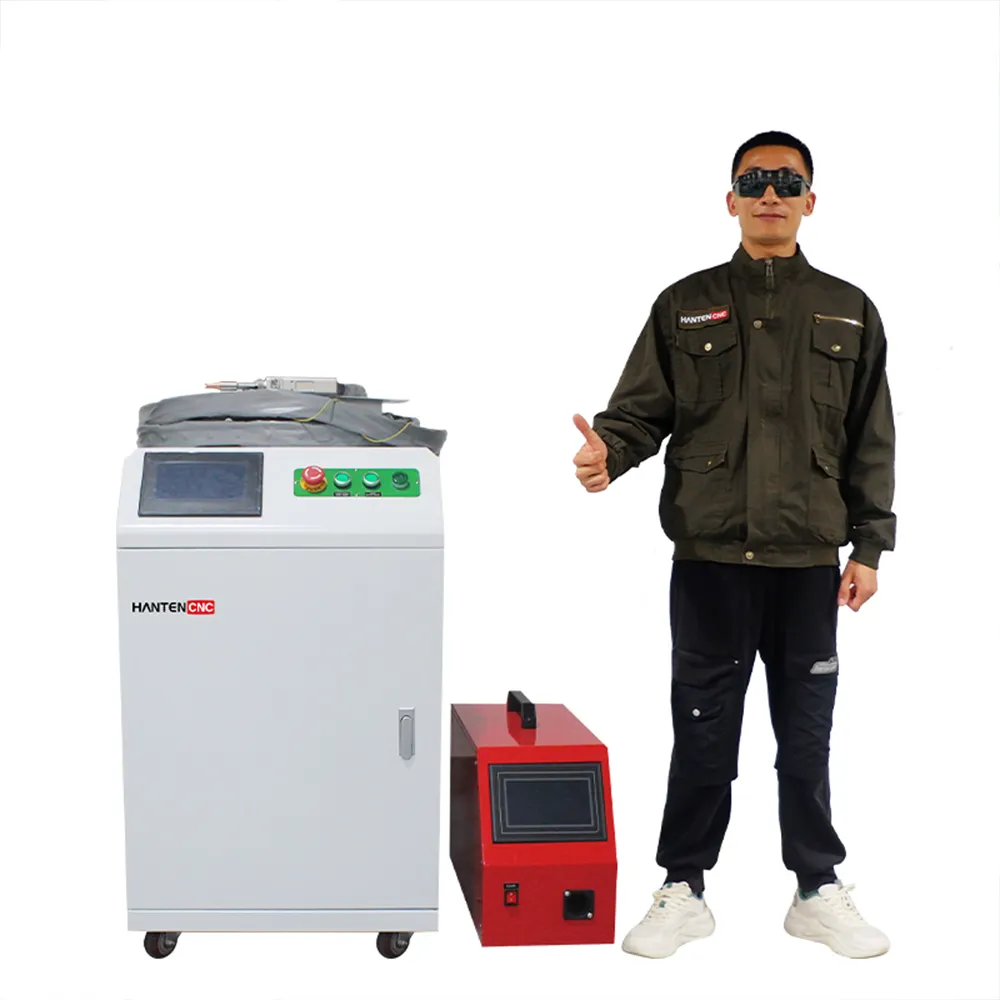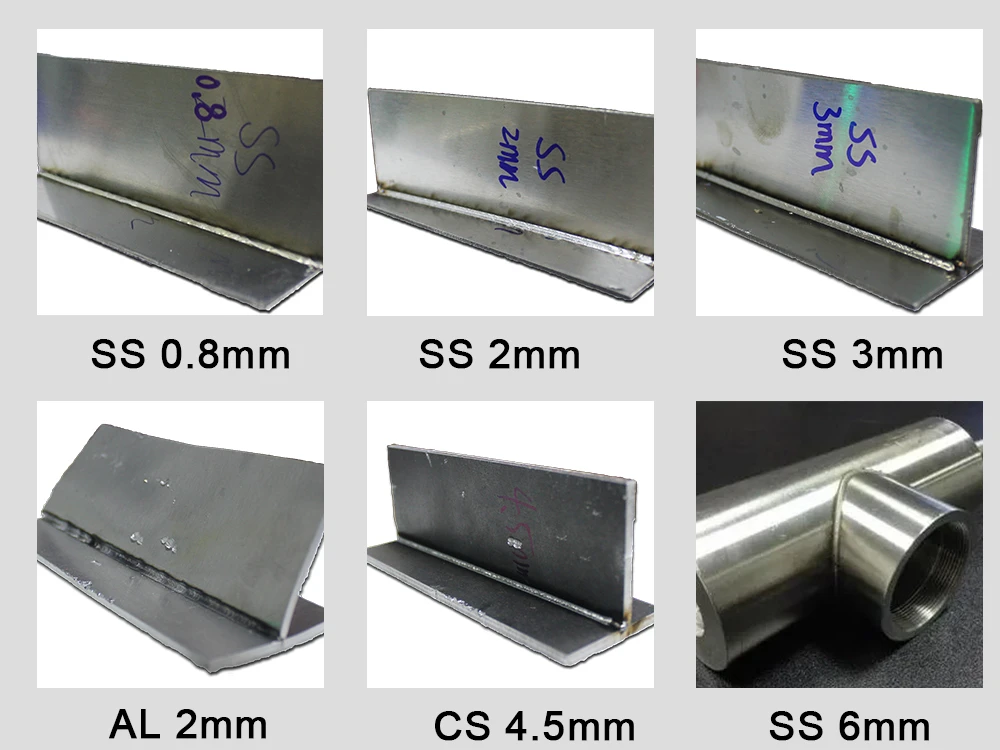Laser welding aluminum is a necessary term nowadays. People mostly ask us how laser weld behaves on aluminum. Is it strong or compatible?
In short, laser welding aluminum is precise, high-speed, and creates strong joints. Because of its benefits, laser welding aluminum is prevalent in many industries.
What is Laser Welding Aluminum?
Welding is commonly known as joining two metal parts. As the name implies, welding two aluminum parts using laser technology is called laser welding aluminum. It uses a focused laser beam to join aluminum pieces. The laser melts the aluminum, creating a precise and robust weld.
Laser welding aluminum has several benefits. The best things about this technology are its accuracy, speed, and strength. It usually makes stronger joints than other welding ways.
Laser welding aluminum is used in many industries. Automotive, aerospace, electronics, and construction are all common areas. Laser welding is used primarily for parts that need to be strong.
How Does a Handheld Laser Welder for Aluminum Work?
Laser welding aluminum is simple. People with general knowledge about lasers can do this. But you must be careful and wear safety gear. Laser beams can burn your skin or eye. Therefore, wear safety glasses, gloves, and appropriate protective gear. Also, make sure your workspace is well-ventilated. Last but not least, ensure no burning items are near your workplace.
Step #1 Prepare Your Aluminum Parts
First, wash the aluminum plates of dirt before clamping. This includes polishing, chemical cleaning, and blasting.
As you know, laser welding is easily disturbed by dirt or oil, resulting in many welding defects. Therefore, it is crucial to have a clean surface on the aluminum parts before welding.
After you have your material, it is time to get your handheld laser welder set specifically for aluminum. Examine all the connections and wirings with precision. All required is that your device is fit and in good working order.
Step #2 Position the Aluminum Parts & Clamp Them Properly
For this step, you will need a clamp or fixture. However, if you have other tools that work, that is also fine. Correctly align the metal plates for laser welding. Always ensure the edges of the plates are correctly aligned, and there is no gap between them.
Step #3 Adjust the Laser Parameters for Specific Aluminum Alloys
The settings in laser cutting typically vary with the type and thickness of the metal. As the material’s thickness increases, it will require more laser power. Ideal settings for these parameters should be adjusted in this way. As you know, two welding modes are continuous and pulsed. Depending on your desired welding quality, you can go to either of the above procedures.
The laser parameters also change for varying aluminum alloys. For example, laser welding 6061 aluminum may require higher power.
Step #4 Welding Process
Laser welding is usually a three-stage process. First, the method heats a particular part of the aluminum parts. Then, the heat melts that part, and the molten aluminum of two separate parts is mixed. Lastly, the mixed molten metal made a strong joint when it cooled.
Heating
Hold the handheld laser welder for aluminum perfectly at the starting point of the weld seam. In this case, you must ensure a correct angle and distance from the aluminum plates. Gently press the trigger to start the laser. The laser heats the aluminum strictly at the contact point.
Melting
As the laser beam heats the aluminum, it melts the material precisely at the contact point. It generally creates a small molten pool, the bridge between two aluminum parts.
Slowly move the laser head along the weld seam. In this case, maintain a steady speed and consistent distance. In this way, your aluminum laser welding machine melts aluminum along the seam.
Solidifying
The molten aluminum cools and solidifies as you gently move the laser head. The solidified aluminum mainly creates the welded joining between the two plates.
Step #5 Surface Finishing
After welding, you should clean the welded area. Grinding or sanding can remove the excessive part of the welded joint. You can also apply other surface finishing techniques, like anodizing, painting, or e-coating.
Understanding Aluminum Materials
Aluminum is one of the most popular metals on earth. People use it every day in everything from household appliances to large machinery.
Aluminum is generally a lightweight, silver-colored metal. Its chemical symbol is Al. It is mainly famous for its versatility and wide range of applications.
Aluminum is naturally corrosion-resistant. It forms a thin oxide layer that protects the metal from corrosion. In addition, this metal has good conductivity and is non-magnetic. The best part of this metal is that it is 100% recyclable.
There are many laser-welding aluminum alloys. However, five are the most common for laser welding.
- Aluminum 1100 is pure aluminum with excellent corrosion resistance. This aluminum alloy is soft and pliable.
- Aluminum 3003 alloy contains manganese. It is usually stronger than 1100. It is mainly used in cooking utensils and storage tanks.
- Aluminum 5052 alloy contains magnesium. This alloy has better machinability and corrosion resistance. These aluminum alloys are often seen in the marine.
- Aluminum 6061 is the most widely used metal. It contains magnesium and silicone, which make it even more robust and improve weldability. Because of this, it has another name, “Laser Welding 6061 Aluminum.” However, it is used in construction and automotive parts.
- Aluminum 7075 primarily comprises zinc, which provides aluminum strength. This alloy is used in many aircraft components. Compared to others, though, it’s terrible at welding.
Various aluminum alloys are widely used in many sectors. Welded parts, machining parts, packaging, construction, and electric gadgets are the most common. It is a versatile metal and is usually suitable for welding. But you must choose the alloy that is suitable for this.
How to Choose the Best Aluminum Laser Welder?
A few factors need careful consideration when choosing an aluminum laser welder. These points help you find the best option for your project.
Factor #1 Make Sure Your Project Requirements
First, identify your project needs. Does it only work with aluminum? In addition, consider the thickness of the aluminum you will weld. Also, check whether you need deep welds or surface welds. What types of products or tools will you make? Does it require high precision, like jewelry?

Factor #2 Laser Power
Once you know all your project needs, you should first check laser power. At HantenCNC, you can get laser welding machines from 100W to 3000W. For engraving all types of metals with average thickness, you can choose a laser power 2000W.
Factor #3 Laser Type & Pulse Duration
Only laser power is not enough. You must know the type of laser and its maximum pulse duration. Fiber laser welding aluminum is primarily suitable for this job. As you know, fiber lasers are suitable for metals, while CO2 lasers are ideal for non-metals.
Laser welders for aluminum may use pulsed or continuous lasers. Some devices are equipped with both features. So, before you choose a metal laser welding machine, know whether your device has all these features.

Factor #4 Compatibility with Aluminum Alloys
Once you have checked the laser power, type, and wavelength, check whether the machine can handle your specific aluminum alloys. Not all welders are compatible with aluminum alloys; some may be challenging to weld. Therefore, always ensure the aluminum laser welder can handle the specific alloy you will use.
Common alloys like 6061 and 5052 may require more specific laser settings. You are always welcome to our customer support team to learn more about it.
Factor #5 Speed & Quality
Laser welding quality mainly depends on a few factors. Did you adjust the laser parameter correctly? Is your device compatible with the aluminum you are engraving?
Also, the speed and quality of the work depend on the type of work you will do. For example, jewelry making is a slow and precise process. On the other hand, construction tools need high speed and good strength.
Factor #6 Customer Service
Customer service is always the most important thing about a laser welder manufacturer. In a way, it fixes all of your troubles. Whether you need help setting up or fixing something, customer service is always there to help. So, think about it when picking out a laser welding machine for aluminum.
Factor #7 Costs
After evaluating the above six points, the next checkpoint is the budget box. You must ensure the cost matches the machine’s quality and efficiency. You can point out the operating, maintenance, and repair costs in this case.
Frequently Asked Questions
What is the best welding process for aluminum?
The best welding process for aluminum is laser welding. This method produces high-precision laser beams that melt the mating point of two aluminum parts. Since this process creates less HAZ, thus you can achieve precise welding. As you know, aluminum is a soft metal, so laser welding is the best for aluminum.
Why is aluminum bad for traditional welding?
TIG and Arc welding are two famous traditional methods. Both methods create high temperatures and wider HAZ. Since aluminum is a soft metal, these ways are less effective. In this case, laser welding aluminum is the best option. As you know, laser welding aluminum creates precise heating and less HAZ. That’s what you need when joining two fragile aluminum parts.
Is welding aluminum AC or DC?
Laser welding aluminum typically uses AC (Alternating Current). AC helps break up the oxide layer on the aluminum’s surface during the process, enabling better and cleaner results. AC is also prevalent in other welding methods, like TIG and Arc welding.
Is laser welding stronger than TIG?
Yes, laser welding is generally stronger than TIG for aluminum welding. It usually offers higher precision and deeper penetration. The best part of this method is that it creates less heat distortion. These benefits mainly create stronger and cleaner welds.
